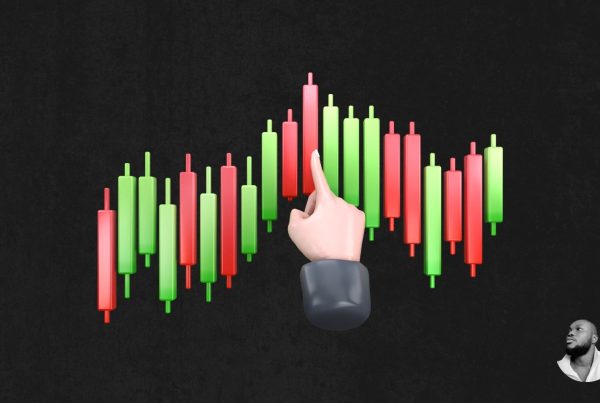How to Understand Crypto Market Cycles
The cryptocurrency market is known for its volatility and rapid changes, making it essential for investors and enthusiasts to understand the underlying cycles that drive price movements. Recognizing these cycles can help you make informed decisions, whether you are a seasoned trader or a newcomer to the crypto space. In this comprehensive guide, we will delve into the various phases of crypto market cycles, the factors influencing them, and strategies to navigate these cycles effectively.
What Are Crypto Market Cycles?
Crypto market cycles refer to the recurring patterns of price movements in the cryptocurrency market. These cycles can be broadly categorized into four main phases: accumulation, uptrend, distribution, and downtrend. Understanding these phases is crucial for predicting potential price movements and making strategic investment decisions.
The Four Phases of Crypto Market Cycles
1. Accumulation Phase
The accumulation phase occurs after a prolonged downtrend, where prices stabilize at lower levels. During this phase, savvy investors begin to buy assets at discounted prices, anticipating future growth. Key characteristics of the accumulation phase include:
- Low trading volume
- Price consolidation
- Market sentiment is generally bearish
Investors who recognize this phase can position themselves for potential gains as the market begins to shift.
2. Uptrend Phase
Once the accumulation phase concludes, the market enters the uptrend phase. This is characterized by rising prices and increasing trading volume as more investors become interested in the market. Key indicators of this phase include:
- Higher highs and higher lows in price movements
- Positive news and developments in the crypto space
- Increased media coverage and public interest
During this phase, early investors often see significant returns on their investments.

3. Distribution Phase
The distribution phase follows the uptrend and is marked by a peak in prices. Here, early investors begin to sell their holdings to realize profits, leading to a slowdown in price increases. Characteristics of the distribution phase include:
- High trading volume with mixed price movements
- Market sentiment shifts from bullish to cautious
- Signs of market exhaustion
Recognizing the distribution phase can help investors avoid potential losses as the market prepares for a downturn.
4. Downtrend Phase
The downtrend phase is characterized by falling prices and declining trading volume. This phase can be triggered by various factors, including negative news, regulatory changes, or market corrections. Key features of the downtrend phase include:
- Lower highs and lower lows in price movements
- Increased fear and uncertainty among investors
- Potential for panic selling
Understanding this phase is crucial for investors looking to minimize losses and prepare for the next accumulation phase.
Factors Influencing Crypto Market Cycles
Several factors can influence the length and intensity of crypto market cycles. Understanding these factors can provide valuable insights into market behavior.
1. Market Sentiment
Market sentiment plays a significant role in driving price movements. Positive news, such as institutional adoption or technological advancements, can lead to bullish sentiment, while negative news can trigger fear and panic selling.
2. Regulatory Developments
Regulatory changes can have a profound impact on the crypto market. For instance, favorable regulations can boost investor confidence, while stringent regulations can lead to market downturns. Keeping abreast of regulatory news is essential for understanding market cycles.
3. Technological Advancements
Innovations in blockchain technology and the introduction of new cryptocurrencies can influence market cycles. Projects that solve real-world problems or enhance existing technologies often attract investor interest, leading to price increases.
4. Economic Factors
Global economic conditions, such as inflation rates and interest rates, can also impact the crypto market. In times of economic uncertainty, investors may turn to cryptocurrencies as a hedge against traditional financial systems.
Strategies for Navigating Crypto Market Cycles
Understanding market cycles is only part of the equation; having a strategy to navigate these cycles is equally important. Here are some effective strategies:
1. Dollar-Cost Averaging (DCA)
Dollar-cost averaging involves investing a fixed amount of money at regular intervals, regardless of market conditions. This strategy helps mitigate the impact of volatility and reduces the risk of making poor investment decisions based on short-term price movements.
2. Setting Stop-Loss Orders
Implementing stop-loss orders can help protect your investments during downtrends. By setting a predetermined price at which to sell, you can limit potential losses and preserve capital for future investments.
3. Diversification
Diversifying your portfolio across different cryptocurrencies can reduce risk. By investing in a mix of established coins and promising altcoins, you can balance potential losses with gains from other assets.
4. Staying Informed
Keeping up with the latest news and trends in the crypto space is crucial for making informed decisions. Follow reputable sources such as CoinDesk and CoinTelegraph for updates on market developments.
Real-World Applications of Understanding Market Cycles
Understanding crypto market cycles can have practical applications beyond just trading. Here are a few examples:
1. Institutional Investment Strategies
Institutional investors often analyze market cycles to determine the best times to enter or exit positions. By understanding these cycles, they can optimize their investment strategies and maximize returns.
2. Project Development and Funding
Blockchain projects can benefit from understanding market cycles when planning fundraising efforts. Launching an Initial Coin Offering (ICO) during an accumulation phase may attract more investors than during a downtrend.
3. Community Engagement
Crypto communities can leverage knowledge of market cycles to foster engagement and support for projects. By educating members about market trends, communities can encourage informed discussions and collective decision-making.
FAQs About Crypto Market Cycles
What is the average duration of a crypto market cycle?
The duration of a crypto market cycle can vary significantly, typically ranging from several months to a few years. Factors such as market sentiment, regulatory changes, and technological advancements can influence the length of each phase.
How can I identify the current phase of the market cycle?
To identify the current phase of the market cycle, analyze price trends, trading volume, and market sentiment. Tools such as technical analysis and sentiment analysis can provide valuable insights into market conditions.
Is it possible to predict market cycles accurately?
While it is challenging to predict market cycles with absolute certainty, understanding historical patterns and current market conditions can improve your ability to anticipate potential price movements.
What role do emotions play in crypto market cycles?
Emotions such as fear and greed significantly influence market cycles. During uptrends, greed can drive prices higher, while fear during downtrends can lead to panic selling. Recognizing these emotional triggers can help investors make more rational decisions.
Conclusion
Understanding crypto market cycles is essential for anyone looking to navigate the volatile world of cryptocurrencies. By recognizing the four phases—accumulation, uptrend, distribution, and downtrend—you can make informed investment decisions and develop effective strategies to manage risk. Stay informed about market trends, regulatory developments, and technological advancements to enhance your understanding of these cycles.
For the latest news and price tracking in the crypto space, consider visiting Bitrabo. Follow me on social media for more insights: X, Instagram, and Threads.
Disclaimer: This article is for informational purposes only and should not be considered financial advice. Always conduct your own research before making investment decisions.
The Crypto Watchlist of the Week 🔎
Subscribe to receive expert-curated projects with real potential—plus trends, risks, and insights that matter. Get handpicked crypto projects, deep analysis & market updates delivered to you.


